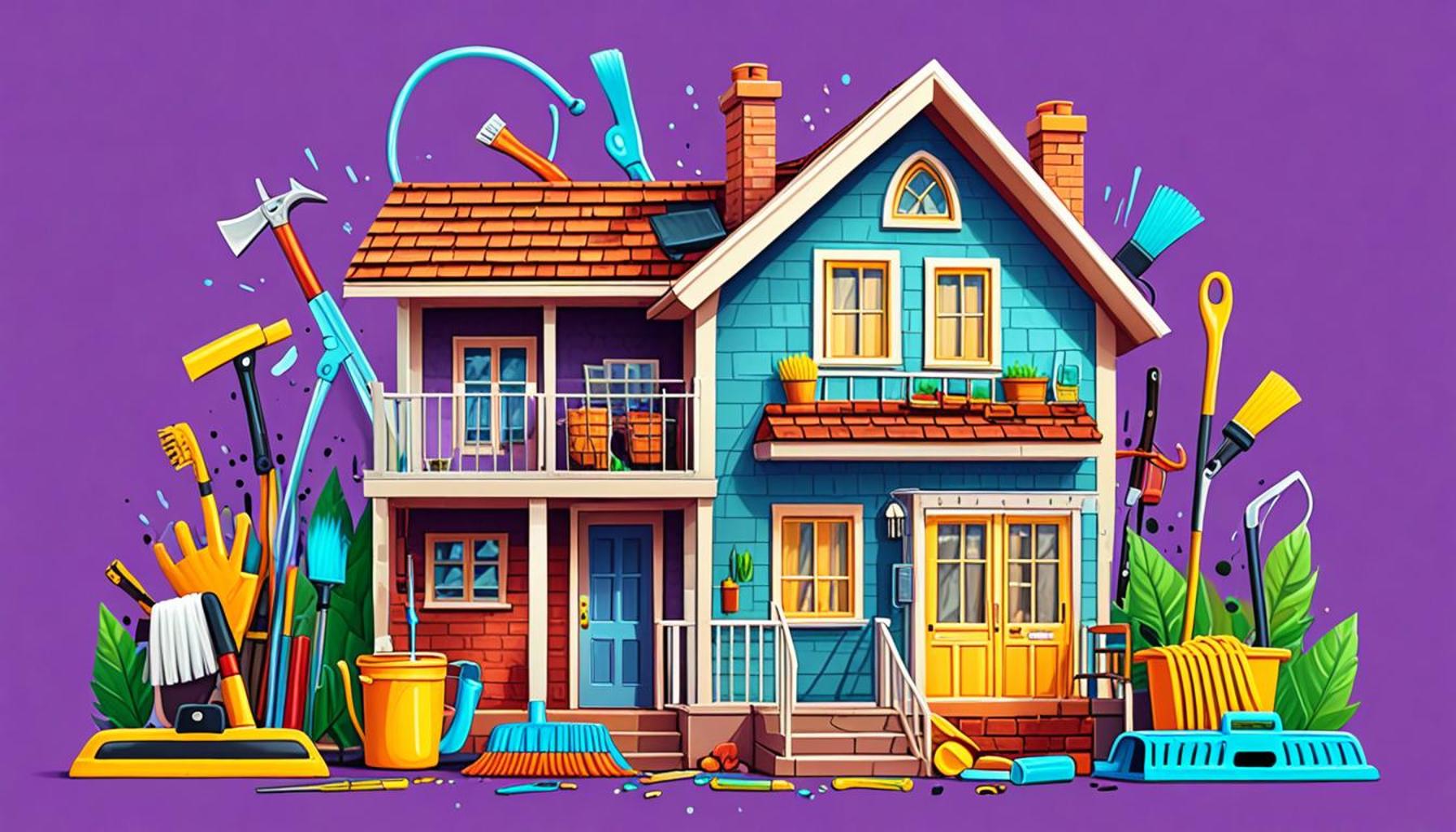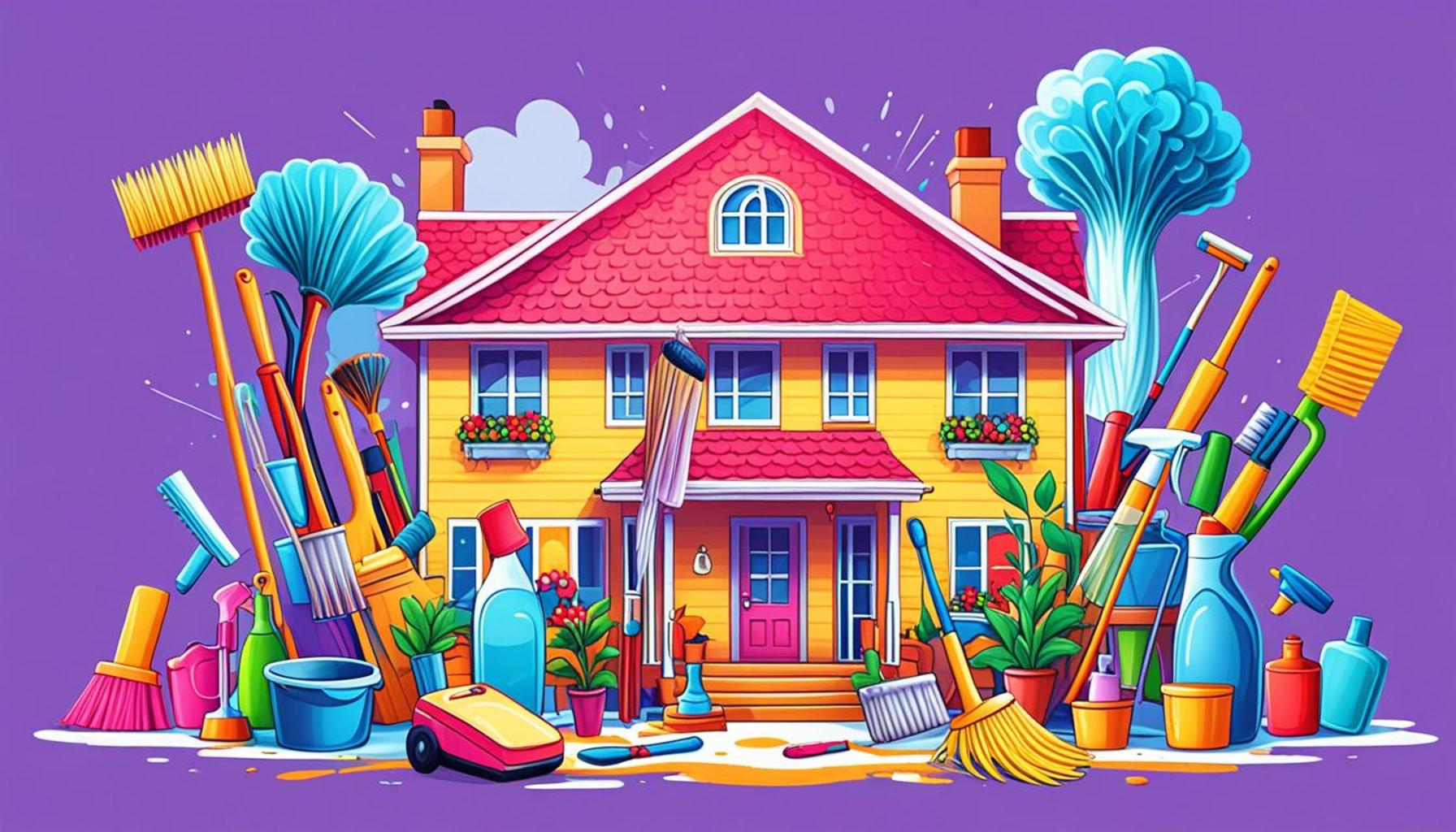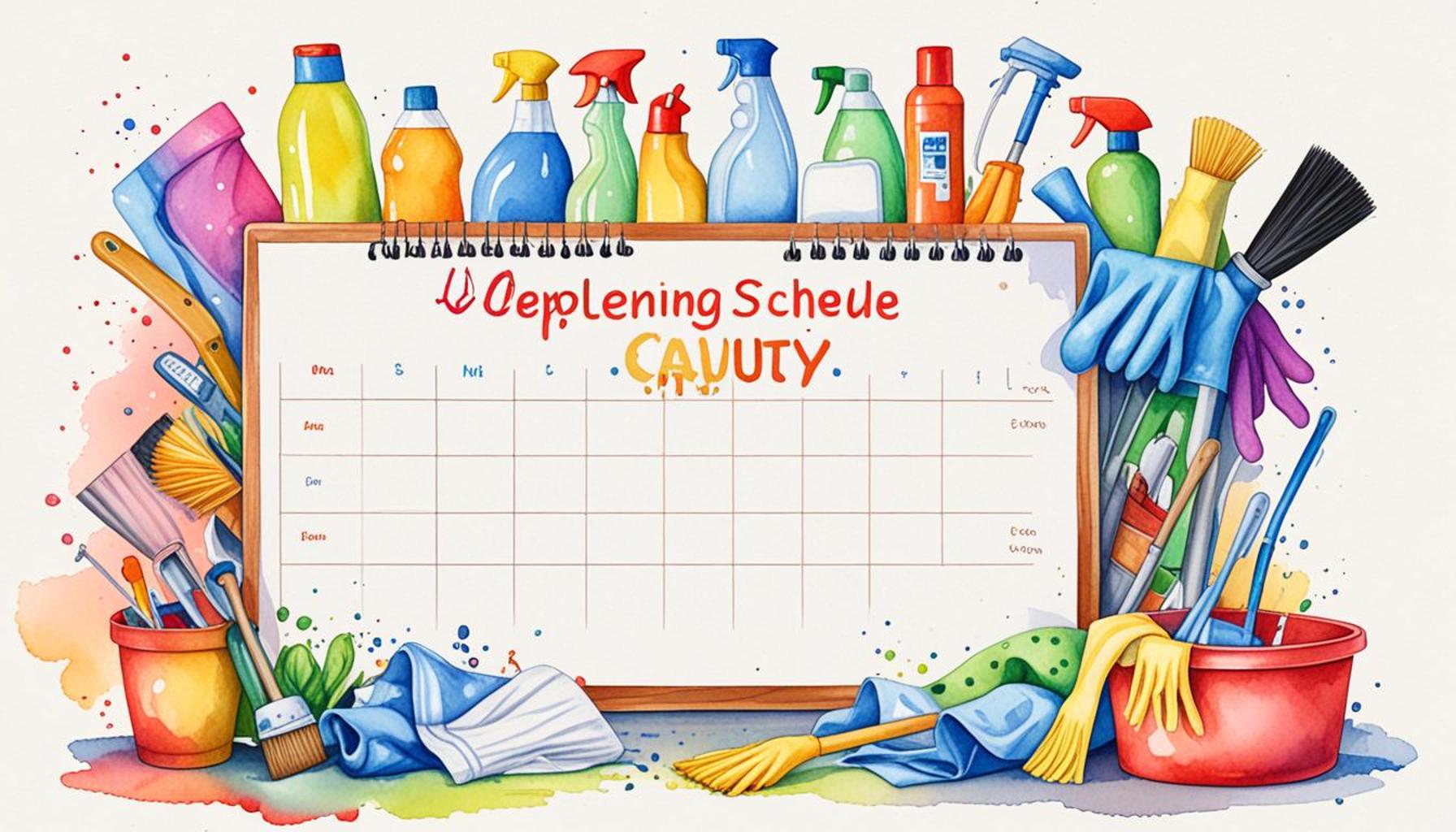Establishing a Home Maintenance Budget to Optimize Cleaning and Repair Efforts

The Crucial Role of Home Maintenance Budgeting
Owning a home is a rewarding yet demanding venture, filled with responsibilities that can sometimes feel daunting. Among these responsibilities, the management of home maintenance is key to enhancing not only the livability of your space but also its longevity and value. Creating a specific budget for home maintenance is not merely a financial exercise; it’s an essential strategy that can transform overwhelming tasks into systematic, manageable duties.
A well-structured home maintenance budget serves multiple purposes, each benefiting homeowners in distinct yet interconnected ways. By establishing this budget, homeowners can:
- Prioritize Tasks: One of the first steps in budget creation is to categorize and list the necessary home maintenance tasks. This includes annual inspections, seasonal responsibilities like gutter cleaning, and addressing unexpected issues that arise, such as plumbing leaks or roof damage.
- Avoid Financial Surprises: By allocating specific funds to essential repairs and routine maintenance, homeowners can prepare for unexpected expenses without derailing their overall budget. For instance, having a contingency fund can help cover the costs of replacing a broken heating system during winter months when timely repairs are crucial.
- Enhance Home Value: Regular maintenance not only protects your property but also contributes significantly to its market value. Consistent upkeep, such as repainting, lawn care, and timely replacements of major appliances, can boost curb appeal and ensure homeowners get a better return on investment when it’s time to sell.
The challenge many face is determining the right budget proportion. According to home improvement studies, an average American household typically spends between $1,500 to $3,000 every year on maintenance and repairs. However, this figure can differ widely based on variables such as the size of the home, its age, and the climate of the area, meaning homeowners should tailor their budgets to reflect specific needs.
Creating an effective home maintenance budget involves not just allocating funds but also establishing a schedule for when various tasks should be completed. For example, conducting a roof inspection and chimney cleaning annually can not only prevent costly repairs later but also provide peace of mind during severe weather. Consider also seasonal tasks, such as preparing your air conditioning system for summer or safeguarding the home against harsh winter conditions.
In this article, we will delve deeper into practical steps and strategies to formulate a robust home maintenance budget. By approaching this process methodically, homeowners can align their cleaning and repair priorities with their financial realities, resulting in a safer and more enjoyable living environment.
DISCOVER MORE: Click here for essential cleaning tips
Crafting Your Home Maintenance Budget: Steps to Success
To embark on the journey of establishing a practical home maintenance budget, homeowners must take a systematic approach. This approach not only allows for efficient planning but also ensures that financial resources are allocated wisely, preventing last-minute scrambles when issues arise. Here are some essential steps to consider:
- Assess Your Home’s Needs: Begin with a thorough evaluation of your property. Take stock of what needs to be repaired or maintained. This may include inspecting your roof, plumbing, electrical systems, and HVAC units. Assessing the current condition of essential services will provide insight into what to prioritize. Consider the age of your home and its various components—older homes may require more frequent and extensive maintenance.
- Research Average Costs: With a checklist in hand, the next step is to research the average costs associated with common maintenance tasks. For instance, hiring a professional for an HVAC inspection averages about $75 to $150, while exterior painting can range between $2,000 and $5,000 depending on size and detail. Understanding the financial implications of routine services will help shape your budget more effectively.
- Set Clear Budget Categories: Structure your budget by creating defined categories. Divide your budget into sections such as routine maintenance, small repairs, and emergency repairs. This clear delineation allows for easier tracking and helps to simplify decisions when unexpected issues arise. It can be beneficial to allocate 1% to 2% of your home’s value annually for maintenance, factoring in both regular upkeep and unexpected repairs.
- Establish a Fund for Emergencies: It’s wise to set aside a separate fund specifically for emergency repairs. Create a cushion of at least $500 to $1,000, or more depending on your home’s age and condition. An emergency fund can reduce stress when crises occur, such as a malfunctioning water heater or a significant roof leak during a storm.
- Maintain a Calendar: As you establish your budget, couple it with a maintenance calendar that outlines when tasks need to be performed. This could include seasonal chores such as cleaning gutters in the fall or winterizing outdoor hoses and equipment. Organizing maintenance jobs on a calendar not only helps remember when tasks are due, but also enables efficient allocation of time and resources throughout the year.
Incorporating these steps into your financial planning will optimize your approach to home maintenance, allowing for a smoother, more manageable process. Moreover, by having a solid structure in place, homeowners can enjoy greater peace of mind knowing that their property is cared for, and they are prepared for any issues that may emerge.
As we dive deeper into effective strategies for managing and optimizing your home maintenance budget, it becomes paramount to understand the long-term benefits of consistent upkeep over expensive, reactive repairs. Stay tuned as we explore additional insights and actionable tips to create an efficient, sustainable approach to maintaining your home.
Understanding the Importance of a Maintenance Budget
Establishing a home maintenance budget is crucial for effective cost management and ensuring the longevity of your property. When you allocate specific funds for cleaning and repair tasks, you not only prioritize the upkeep of your home but also prevent small issues from escalating into expensive problems later on. A carefully planned budget allows homeowners to enjoy peace of mind knowing that they are financially prepared for the unexpected.
Key Components of a Home Maintenance Budget
To create an efficient maintenance budget, consider several key components. Most importantly, assess the condition of your home by identifying areas that require regular maintenance, such as plumbing, roofing, and landscaping. Next, research and estimate costs associated with these services to inform your budget accurately. It’s advisable to allocate at least 1% to 3% of your home’s value annually for maintenance. This proactive approach not only saves money but enhances the overall living environment.
| Advantages | Description |
|---|---|
| Enhanced Planning | Budgeting allows homeowners to plan for upcoming repairs and cleaning, reducing stress. |
| Cost Savings | Preventive maintenance through budgeting can save significant money on major repairs. |
Monitoring Expenses
As you progress through the year, tracking your expenditures is essential. Utilize apps or spreadsheets to monitor your cleaning and repair costs against your budget. This practice allows you to identify areas where you can save more and reallocate funds as necessary. Regular monitoring ensures your home remains a safe and comfortable haven without straining your financial resources.
DISCOVER MORE: Click here to enhance your cleaning routine
Adapting Your Home Maintenance Budget for Seasonal Changes
As the seasons shift, so do the needs of your home. Recognizing these cyclical demands is critical not just for maintenance but also for optimizing your budget effectively. Each season brings specific tasks that can significantly impact both cleaning and repair efforts, requiring homeowners to be proactive in their financial planning. Here’s how to adapt your budget for seasonal changes:
- Spring: A Time for Renewal: With the thaw of winter, spring emerges as the ideal season for deep cleaning and inspection. Allocate budget resources for gutter cleaning, lawn preparation, and air conditioning servicing. Engaging professionals for these tasks can average about $200 to $500 depending on the scope of work. Incorporating these costs into your budget early allows homeowners to transition smoothly into warmer months without financial strain.
- Summer: Outdoor Repairs and Maintenance: As the days grow longer, your focus shifts to outdoor projects. This is particularly crucial if you have amenities such as decks or pools, which require regular upkeep. Homeowners often overlook the importance of maintaining outdoor spaces, leading to costly repairs if issues are left unattended. Budgeting around $1,000 annually for tasks like deck sealing, pool maintenance, and landscape care can safeguard your investments and enhance your home’s curb appeal.
- Fall: Preparing for Winter: The cooler months demand a new set of preparations. Investing in winterization measures, such as furnace inspections and insulation checks, is critical for energy efficiency. Setting aside about $300 to $600 during this season can cover vital services, ensuring that your home is prepared against potential winter storms. Don’t forget to inspect your fireplace and chimney; a clean and functioning system is essential not only for comfort but also for safety.
- Winter: Assess and Plan: While much of the outdoor work comes to a standstill, winter is the perfect time to assess your home maintenance budget for the coming year. Reflect on where excess funds might have been allocated and where savings could be realized. It’s also the time for strategic planning. Consider the costs anticipated for upcoming spring maintenance and incorporate these into a prospective budget for the new year, balancing it against any needed repairs that arose during winter.
Beyond seasonal changes, homeowners should also consider the age and unique features of their properties. For instance, homes with older plumbing systems may require more frequent inspection and maintenance, while modern homes equipped with smart technology might necessitate budgeting for updates and software enhancements. Tailoring your maintenance plan to the specific needs of your home ensures a secure, efficient living environment.
Moreover, seize the opportunity to learn and expand your skills. Engaging in DIY projects can be a rewarding approach to maintenance—areserving funds for knowledge and tools can provide a long-term return on investment. Markets often offer classes for basic home repair skills or you can find resources online to guide you through various tasks, thus further optimizing your budget.
In a landscape fluctuating with rising costs, being adaptive is crucial. The integration of these seasonal and personalized strategies into your home maintenance budget not only provides peace of mind but also ensures the integrity and longevity of your property. Remain vigilant, organized, and proactive in your budgeting efforts, and your home will thank you through its enduring quality and comfort.
DISCOVER MORE: Click here for deep cleaning tips
Concluding Thoughts on Your Home Maintenance Budget
Establishing a home maintenance budget is not merely an exercise in financial management; it is an investment in the comfort, safety, and longevity of your property. By understanding the cyclical nature of home maintenance needs throughout the year, homeowners can allocate funds effectively to tackle both cleaning and repair tasks. This proactive approach ensures that seasonal challenges are met head-on, preventing small issues from escalating into costly repairs.
Moreover, tailoring your budget to the specific characteristics of your home allows you to prioritize essential services and improvements. Whether it’s adjusting for older plumbing or incorporating smart technology upgrades, a personalized budget aligns with your home’s unique requirements, making your living environment more efficient and secure.
As we navigate fluctuating economic conditions, it’s also important to embrace a DIY mentality where feasible. Unique learning opportunities abound, from community workshops to online tutorials that can equip homeowners with valuable skills. Allocating resources for education can supplement labor costs and enhance overall budget efficacy, representing a wise use of your financial assets.
In summary, constructing and maintaining a thoughtful home maintenance budget is essential in achieving a balance between aesthetic appeal, functional integrity, and financial stability. With vigilance, organization, and proactivity, this budget will not only alleviate stress but also fortify your investment, ensuring that your home remains a haven of comfort and a reflection of your values. Take the initiative now to refine your budgeting strategies, and witness the positive transformations in your home’s upkeep and repair efforts for years to come.


